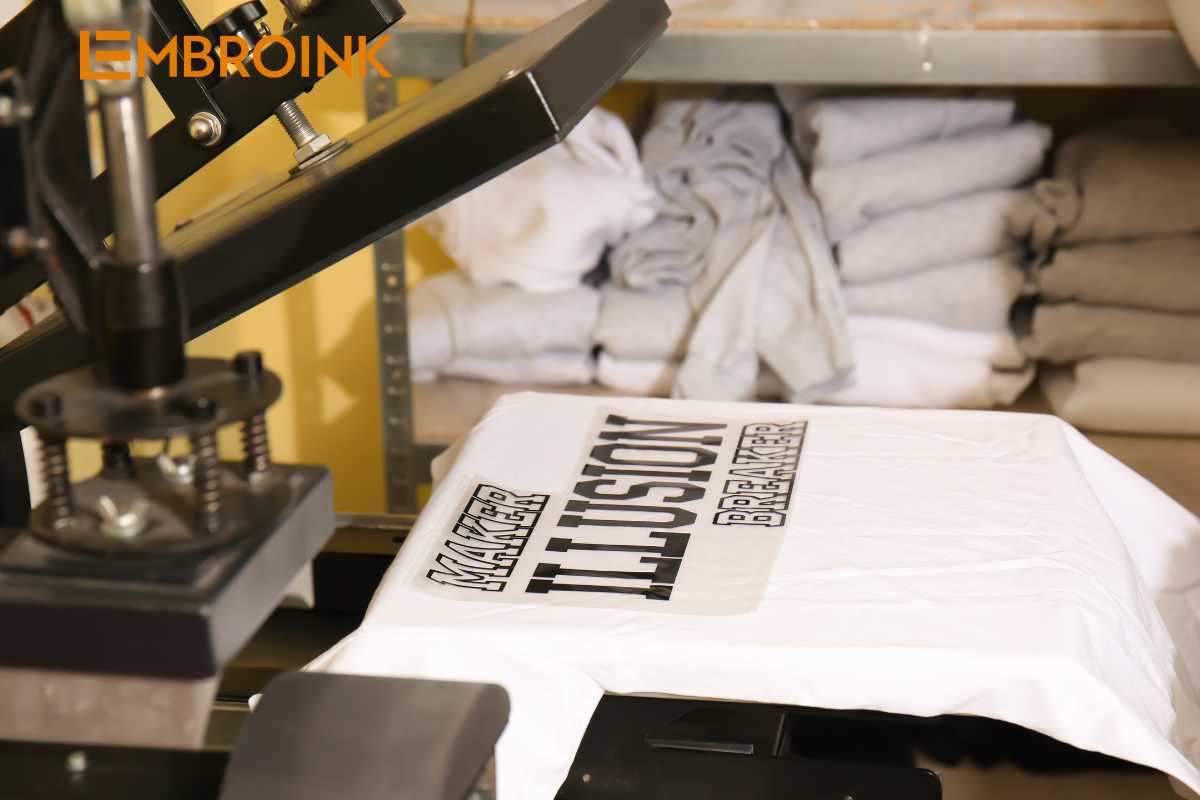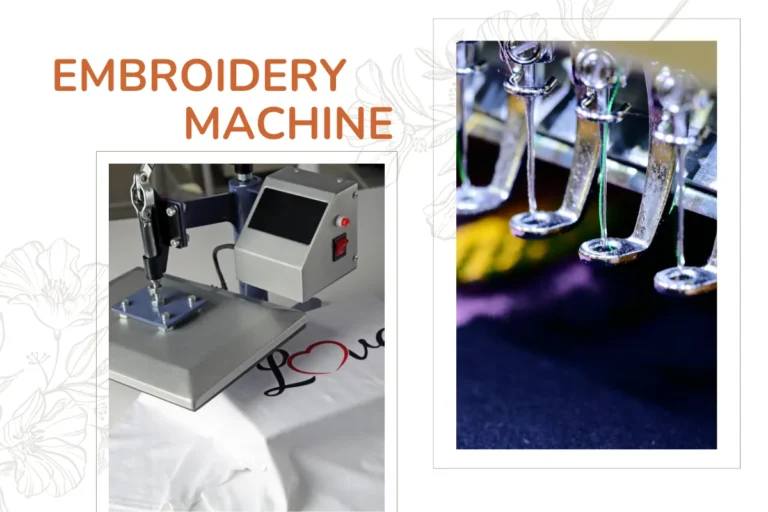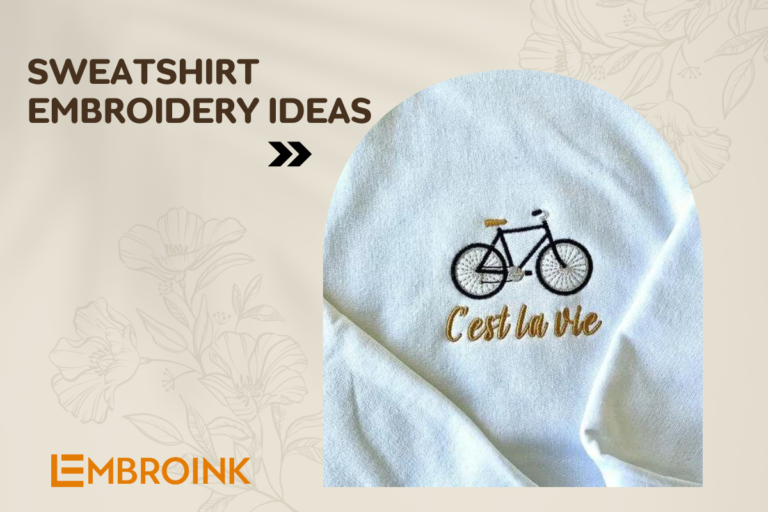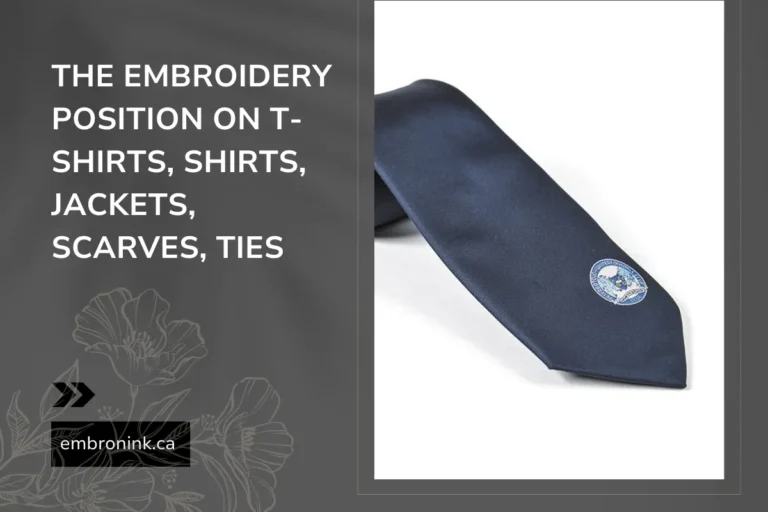Benefits and Applications of Digital Printing
In today’s fast-paced world, there’s a greater demand than ever for high-quality, customizable, and efficient printing solutions. Digital printing technology has transformed our approach to producing printed materials across various industries, from textiles and marketing to packaging and more.
This post dives into the world of digital printing, highlighting its benefits, applications, and the ways creators and business owners can use this technology to bring their visions to life.
With EmbroInk’s advanced digital printing services, achieving remarkable results has never been easier.
What is Digital Printing?
Digital printing is a modern technique that directly transfers digital images onto various surfaces without the need for traditional printing plates. By eliminating the setup steps required in conventional printing, digital printing offers quicker turnaround times and cost savings. This technology enables high-quality, customizable results and works on a range of materials, including photo paper, canvas, glass, and metal. Ideal for short runs and detailed projects, digital printing is a versatile solution for personalized and on-demand printing needs.
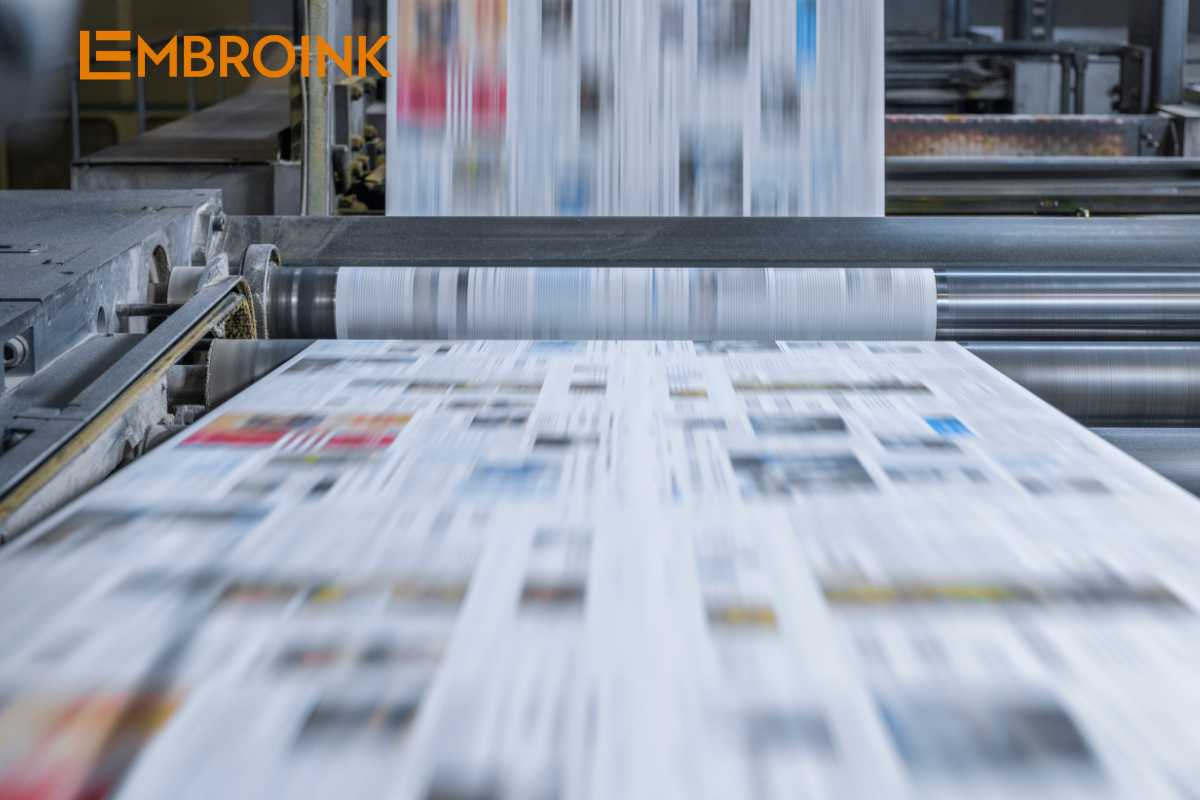
Digital Printing vs. Offset Printing
When choosing between commercial digital and traditional offset printing, it’s important to understand the unique advantages of each:
- Set-up Time: Digital printing requires minimal setup, making it ideal for small to medium print runs. Offset printing, however, involves more extensive preparation, which can increase the time needed for initial setup.
- Cost-Effectiveness: Digital printing is more cost-effective for short runs, as it eliminates the need for printing plates and lowers labor costs. Offset printing becomes economical for larger volumes, where setup costs are spread over a high quantity.
- Customization: Digital printing excels in customization and personalization, perfect for unique, one-off prints. Offset printing, however, is less suited to handling highly individualized projects.
- Turnaround Time: Digital printing offers faster turnaround times since it doesn’t require drying or complex setup processes. Offset printing typically takes longer due to additional pre-press steps.
- Print Quality: Both methods produce high-quality prints. Offset printing, however, may offer superior color fidelity and sharpness, especially for large-scale production.
Each method has its strengths, making the choice between them dependent on project needs, budget, and the desired level of customization.
Types of Digital Printing Methods
Here are several digital printing methods, each suited to unique applications and offering distinct advantages:
Direct to Garment (DTG) Printing
DTG printing applies ink directly to textiles, functioning like an inkjet printer for fabric. It uses specialized aqueous ink that absorbs into the material, creating vibrant, high-resolution prints. Favored for custom apparel, DTG supports small-batch production, making it ideal for limited editions, unique designs, or test marketing due to its cost-effectiveness in small runs.
Inkjet Printing
Inkjet printing utilizes fine droplets of ink to produce high-resolution images and text. Without needing printing plates or extensive setup, it’s perfect for short runs and custom projects. Inkjet printers can handle various surfaces, including paper, canvas, glass, metal, and even marble, giving artists and creators flexibility in substrate choices and color control.
Laser Printing
Laser printing combines speed and accuracy, making it ideal for high-quality documents and images. A laser transfers toner powder onto the material, producing sharp results. Popular in office settings, it handles diverse media, from regular paper to glossy and textured types, with rapid output and low per-page costs, making it suitable for marketing materials, reports, and high-demand documents.
3D Printing
Also known as additive manufacturing, 3D printing creates three-dimensional objects layer by layer from a digital file. This method allows for intricate designs and complex shapes, enabling artists and creators to bring unique, functional objects to life—from sculptures to practical household items.
Each of these digital printing methods caters to specific creative and commercial needs, offering flexibility, precision, and efficiency across different applications.

Applications of Digital Printing
Digital printing has transformed industries by offering flexible, high-quality, and efficient solutions across multiple sectors. Here are some notable applications:
Textiles
Digital printing brings a fresh, adaptable approach to textile design:
- High-Quality Prints: Delivers intricate designs with vibrant colors, ensuring a standout finish.
- Unlimited Design Options: Enables unique patterns and personalized graphics for limitless creativity.
- Cost-Effective Small Runs: Allows affordable, custom designs in small batches without traditional setup costs.
- Quick Turnaround: Adapts quickly to fashion trends and deadlines with faster production cycles.
Marketing
Digital printing enables marketers to engage audiences with personalized, visually appealing materials:
- Brochures & Flyers: Vibrant, detailed prints that showcase products and services effectively.
- Business Cards: High-quality, customized cards to leave a memorable impression.
- Promotional Materials: Eye-catching posters, banners, and event materials enhance brand visibility.
- Custom Packaging: Tailored packaging that reflects brand identity and engages consumers directly.
Signage
Digital printing is ideal for impactful indoor and outdoor signage:
- Wide-Format Printing: Perfect for large-scale banners and posters that capture attention.
- Durability: UV coatings protect signs from weather, ensuring lasting vibrancy.
- Customizable Designs: Allows unique signage tailored to specific brand needs.
- Quick Production: Fast turnaround enables businesses to react swiftly to market trends.
Publishing
Digital printing has streamlined publishing, supporting on-demand, cost-effective solutions:
- Print on Demand: Minimizes waste by printing books, magazines, and brochures as needed.
- Short Runs: Ideal for limited editions, niche markets, and prototype pre-prints.
- Fast Turnaround: Meets tight deadlines, supporting timely releases and updates.
- High-Quality Output: Ensures crisp, vibrant text and images that meet professional standards.
Packaging
For brands seeking unique, personalized packaging, digital printing is a versatile choice:
- Customization: Allows brands to adapt packaging designs for special editions and target markets.
- Quick Setup: Minimal setup time makes it suitable for short runs and fast turnarounds.
- Reduced Waste: Precise ink control reduces waste compared to traditional methods.
- Versatility: Works on various materials, including aluminum, paper, and flexible packaging like pouches.
Digital printing’s versatility and speed make it a go-to for industries looking to balance quality, customization, and efficiency in their printed materials.
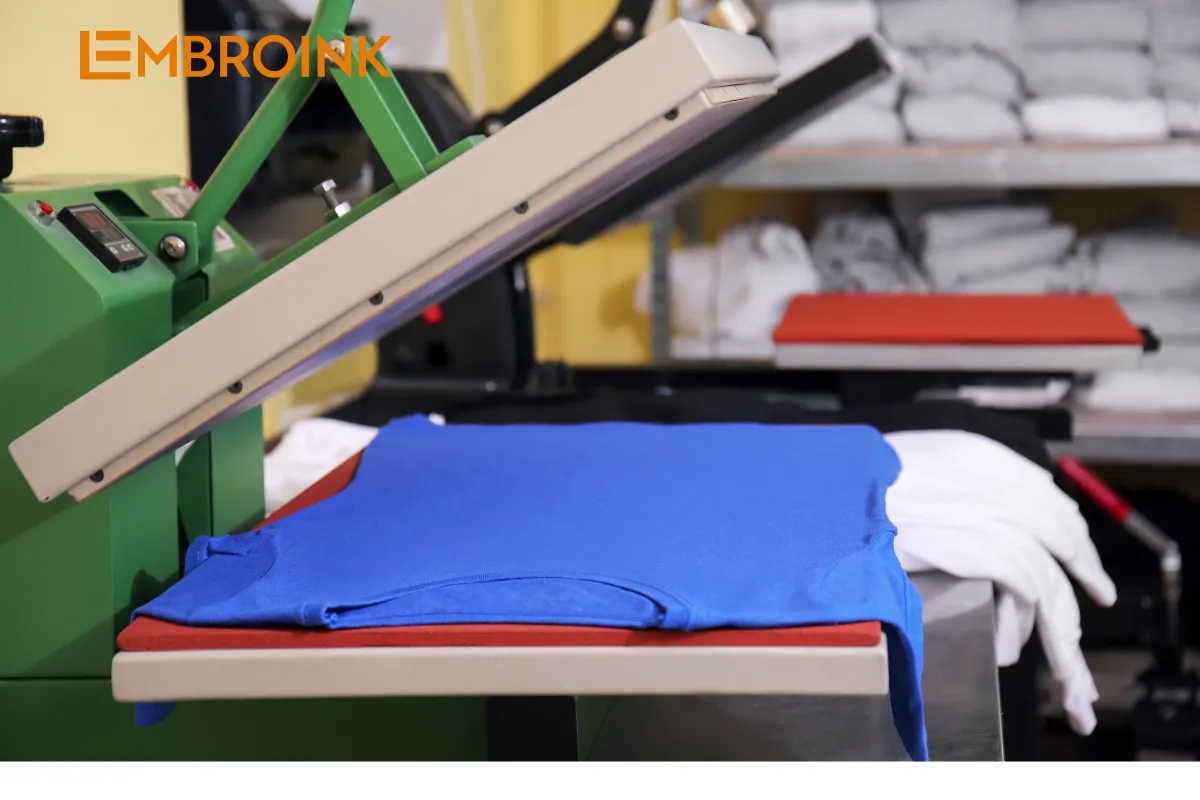
Advantages of Digital Printing
Digital printing provides a range of benefits, making it an ideal choice for both creators and businesses. Here are its key advantages:
Cost-Effectiveness
Digital printing is especially economical for small runs and proofing. Minimal setup costs mean there’s no need for expensive plates, making it an ideal option for small businesses and artists who need high-quality prints at affordable prices.
Customization Options
One of digital printing’s biggest advantages is its customization potential. Each item can be tailored individually, allowing total control over designs, colors, and variations—perfect for unique t-shirts, posters, or customized packaging.
Quick Turnaround Times
Digital printing delivers rapid results, meeting tight deadlines without sacrificing quality. Whether it’s a small batch of marketing materials or custom apparel, the quick production speed helps you respond efficiently to market needs.
Variable Data Printing Capabilities
Variable data printing (VDP) enables personalized prints with unique information, like names or images. This feature is ideal for targeted marketing materials and direct mail campaigns, enhancing customer engagement and impact by personalizing each item for the recipient.
Reduced Setup Costs
Digital printing doesn’t require extensive preparation or expensive plates, so setup costs remain low. This accessibility allows you to begin projects quickly and affordably while maintaining high print quality.
Minimal Waste Production
Since digital printing produces only the required number of prints, it minimizes overproduction and waste. This eco-friendly approach appeals to environmentally conscious brands and artists, helping reduce excess inventory and environmental impact.
Superior Print Quality
Modern digital printing technologies offer high-resolution, vibrant results on various materials, including paper and fabric. This ensures that every print looks polished and professional, enhancing your brand’s image and product appeal.
On-Demand Printing Capabilities
Digital printing supports on-demand production, eliminating the need for excess stock and warehousing. This flexibility aligns with the demand for personalized products, ensuring customers get exactly what they want, exactly when they want it.
These benefits make digital printing a powerful tool for efficient, high-quality, and flexible production across a wide array of applications.

How the Digital Printing Process Works?
Digital printing utilizes advanced technology to produce high-quality prints directly from digital files, employing machines such as inkjet, laser, DTG, and even 3D printers. Here’s a step-by-step breakdown of how it works:
File Preparation
The process begins with a digital file, typically in formats like PDF or TIFF. This file contains all the elements (images, text, graphics) that will appear on the printed product.
Pre-Press Processing
The digital file goes through pre-press adjustments, including color correction, resolution enhancement, and layout optimization. This step ensures the file meets the specific print requirements and that the final output will look as expected.
RIP (Raster Image Processing)
The file is then converted into a bitmap format through RIP (Raster Image Processing). This conversion breaks down the image into tiny dots that the printer can interpret, preparing it for precise reproduction on the selected medium.
Printing
The processed image is sent to the printer, where ink or toner is applied directly to the material. Inkjet printers spray ink, while laser printers use toner and heat to bond the image onto the surface. This method allows for precise, high-resolution reproduction.
Finishing
The final printed material undergoes finishing processes, which may include cutting, binding, laminating, or other enhancements, depending on the desired end product.
Each step in the digital printing process plays a crucial role in ensuring the final product meets the quality standards and specifications necessary for professional results.

